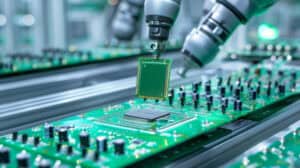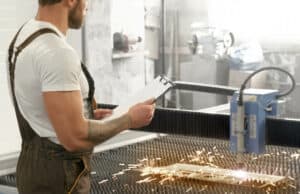News
3D Printing Technologies

How Does 3D Printing Work?
3D printing or additive manufacturing is a process of making three dimensional objects from a digital file.
3D Software
There are many different software tools available.
We often recommend beginners to start with Tinkercad. Tinkercad is free and works in your browser, you don’t have to install it on your computer. Tinkercad offers beginner lessons and has a built-in feature to export your model as a printable file e.g .STL or .OBJ.
Now that you have a printable file, the next step is to prepare it for your 3D printer. This is called slicing.
Slicing: From file to 3D Printer
Slicing basically means slicing up a 3D model into hundreds or thousands of layers and is done with slicing software.
When your file is sliced, it’s ready for your 3D printer. Feeding the file to your printer can be done via USB, SD or Wi-Fi. Your sliced file is now ready to be 3D printed layer by layer.
3D Printing Industry
Adoption of 3D printing has reached critical mass as those who have yet to integrate additive manufacturing somewhere in their supply chain are now part of an ever-shrinking minority. Where 3D printing was only suitable for prototyping and one-off manufacturing in the early stages, it is now rapidly transforming into a production technology.
Most of the current demand for 3D printing is industrial in nature. Acumen Research and Consulting forecasts the global 3D printing market to reach $41 billion by 2026.
As it evolves, 3D printing technology is destined to transform almost every major industry.
Examples of 3D Printing
3D printing encompasses many forms of technologies and materials as 3D printing is being used in almost all industries you could think of. It’s important to see it as a cluster of diverse industries with a myriad of different applications.
A few examples:
- – consumer products (eyewear, footwear, design, furniture)
- – industrial products (manufacturing tools, prototypes, functional end-use parts)
- – dental products
- – prosthetics
- – architectural scale models & maquettes
- – reconstructing fossils
- – replicating ancient artefacts
- – reconstructing evidence in forensic pathology
- – movie props
Rapid Prototyping & Rapid Manufacturing
Companies have used 3D printers in their design process to create prototypes since the late seventies. Using 3D printers for these purposes is called rapid prototyping.
Why use 3D Printers for Rapid Prototyping?
In short: it’s fast and relatively cheap. From idea, to 3D model to holding a prototype in your hands is a matter of days instead of weeks. Iterations are easier and cheaper to make and you don’t need expensive molds or tools.
Besides rapid prototyping, 3D printing is also used for rapid manufacturing. Rapid manufacturing is a new method of manufacturing where businesses use 3D printers for short run / small batch custom manufacturing.
Key Advantages of 3D Printing
- Design Flexibility:
- Enables complex geometries and intricate designs that are hard or impossible to produce with traditional methods.
- Rapid Prototyping:
- Allows fast production of prototypes, speeding up the testing and modification process.
- Reduces the overall product development timeline.
- Customization:
- Makes it easier to create tailor-made products for specific needs.
- Cost Efficiency:
- Lowers long-term costs by eliminating the need for expensive molds.
- Reduces material waste, especially in small-scale production runs.
- Industry Impact:
- Benefits industries like automotive, aerospace, healthcare, and consumer goods by streamlining the manufacturing process and enabling innovation.
Types of 3D Printing Technologies
- Fused Deposition Modeling (FDM):
- Works by extruding heated filament layer by layer to build an object.
- Benefits: Affordable and easy to use.
- Applications: Prototyping, low-cost production.
- Stereolithography (SLA):
- Uses a laser to cure liquid resin into solid layers.
- Benefits: High precision and smooth surface finish.
- Applications: Detailed models, dental products, jewelry.
- Selective Laser Sintering (SLS):
- Fuses powdered materials like nylon or metal with a laser.
- Benefits: Durable and strong parts.
- Applications: Aerospace, automotive, industrial parts.
Materials Used in 3D Printing
- Plastics (ABS, PLA):
- Most commonly used for general prototyping and consumer products.
- Benefits: Affordable and versatile.
- Metals (Stainless Steel, Titanium, Aluminum):
- Used for functional, strong, and durable parts.
- Applications: Aerospace, automotive, medical devices.
- Ceramics and Food-safe Materials:
- Expanding into sectors such as kitchenware, art, and biological models.
- Benefits: Innovative material use opens up new applications.
- Emerging Materials (Carbon Fiber, Conductive Filaments):
- Push the boundaries of 3D printing by offering new capabilities like enhanced strength and conductivity.
How to Choose the Right 3D Printer for Your Needs
- Intended Use:
- Consider what type of products you aim to create (prototypes, functional parts, artistic models).
- Print Quality:
- If precision and detail are needed, opt for technologies like SLA or SLS.
- FDM is suitable for simpler, less detailed projects.
- Material Compatibility:
- Ensure the printer supports the materials you plan to use, such as plastics, metals, or composites.
- Build Volume:
- Choose a printer that accommodates the size of parts you need to produce.
- Budget:
- Balance the cost of the printer with its features.
- Professional-grade printers offer advanced features, but affordable options are available for basic needs.
The Future of 3D Printing
- Bioprinting:
- Printing living cells to create tissues and organs.
- Potential to revolutionize medical fields such as organ regeneration and personalized healthcare.
- 4D Printing:
- Adds the dimension of time, enabling printed objects to change shape or function in response to environmental stimuli.
- Opens new possibilities for adaptive materials in industries like aerospace and textiles.
- Large-scale Construction 3D Printing:
- Allows for printing entire buildings or infrastructure on-site.
- Reduces waste, labor, and construction time.
- Promises to transform the construction industry in the coming years.
More News Articles



